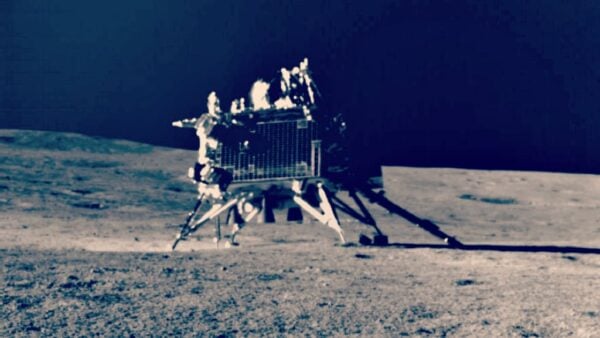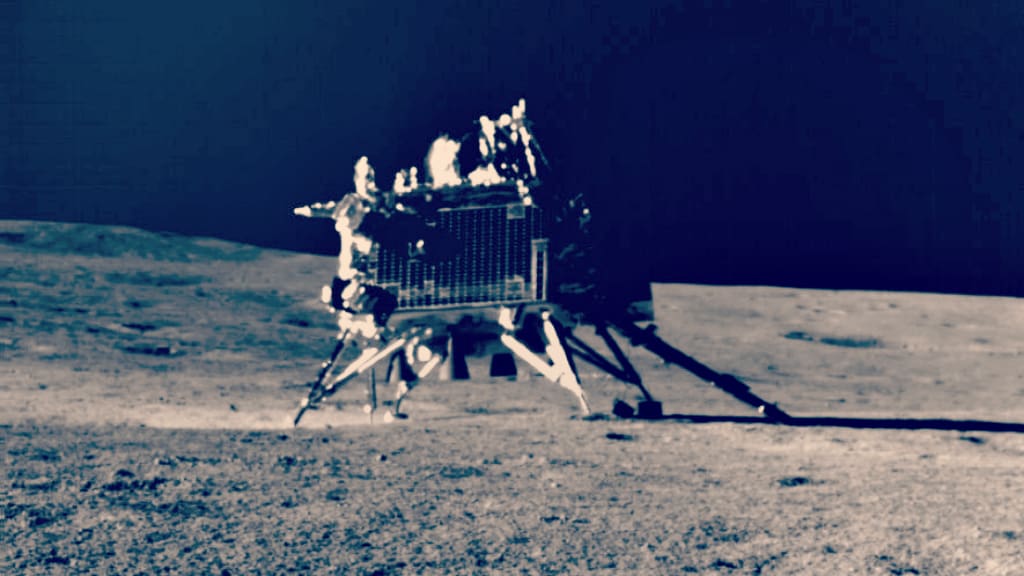
As humans here on planet Earth delighted themselves with the sight of the rare ‘super blue moon’ in the skies, the Indian Lunar Mission continued with the scientific experiments on the Moon’s South Pole.
The Chandrayaan-3 mission now is divided between the Vikram Lander and the Pragyan Rover, each with a different task.
The rover is circling around the touchdown area, analyzing the chemical elements present on the dusty surface of the moon, as it searches ice-water that would greatly benefit future human exploration in the area.
Meanwhile, the lander and its probes record seismic activity on the satellite’s surface, and also study the presence of plasma.
Mint reported:
“The initial assessment of the first-ever measurements of the near-surface lunar plasma environment over the south pole region by RAMBHA-LP payload onboard Chandrayaan-3 lander indicates that plasma there is relatively sparse, (space agency) ISRO said on Thursday.”
Chandrayaan-3 Mission:
In-situ Scientific ExperimentsInstrument for the Lunar Seismic Activity (ILSA) payload on Chandrayaan 3 Lander
— the first Micro Electro Mechanical Systems (MEMS) technology-based instrument on the moon —
has recorded the movements of Rover and other… pic.twitter.com/Sjd5K14hPl— ISRO (@isro) August 31, 2023
Meanwhile, the ‘ILSA’ payload on Chandrayaan 3 lander is studying lunar seismic activity – and revealing some surprises.
“ILSA’s primary objective is to measure ground vibrations generated by natural quakes, impacts, and artificial events. The vibrations recorded during the rover’s navigation on August 25, 2023, are depicted in the figure. Additionally, an event, seemingly natural, recorded on August 26, 2023, is also shown. The source of this event is currently under investigation.
[…] ‘Radio Anatomy of Moon Bound Hypersensitive Ionosphere and Atmosphere’ – Langmuir Probe (RAMBHA-LP) payload onboard Chandrayaan-3 Lander has made first-ever measurements of the near-surface Lunar plasma environment over the south polar region. The initial assessment indicates that the plasma near the lunar surface is relatively sparse, ISRO said in a social media post.
These quantitative measurements potentially assist in mitigating the noise that Lunar plasma introduces into radio wave communication. Also, they could contribute to the enhanced designs for upcoming lunar visitors, ISRO said”
Chandrayaan-3 Mission:
Smile, please📸!
Pragyan Rover clicked an image of Vikram Lander this morning.
The ‘image of the mission’ was taken by the Navigation Camera onboard the Rover (NavCam).
NavCams for the Chandrayaan-3 Mission are developed by the Laboratory for… pic.twitter.com/Oece2bi6zE
— ISRO (@isro) August 30, 2023
India beat space superpowers Russia, China and the US to become the first state to land a spacecraft on the lunar south pole on August 23.
To do that, it spent only the modest budget of $73 million, which is substantially less money than it costs to make a Hollywood space movie such as Interstellar or Gravity.
Daily Mail reported:
“The two-week mission has now reached its halfway mark, with the Pragyan moon rover and Vikram lander racing to finish their ground-breaking exploration before the solar-powered batteries on both vehicles run dry.
[…] Before this happens, however, the Indian Space Research Organization (ISRO) made sure to capture what its Vikram lander looks like through the eyes of Pragyan.”
The Chandrayaan-3 mission is the first to find chemical elements on the moon’s south pole ‘in situ’, rather than by orbital probe remote observation.
“It has recorded evidence of sulphur, aluminum, calcium, iron, chromium, titanium, manganese, silicon, and oxygen, while the search for hydrogen is now under way.”
Read more about the Indian Lunar Mission:

